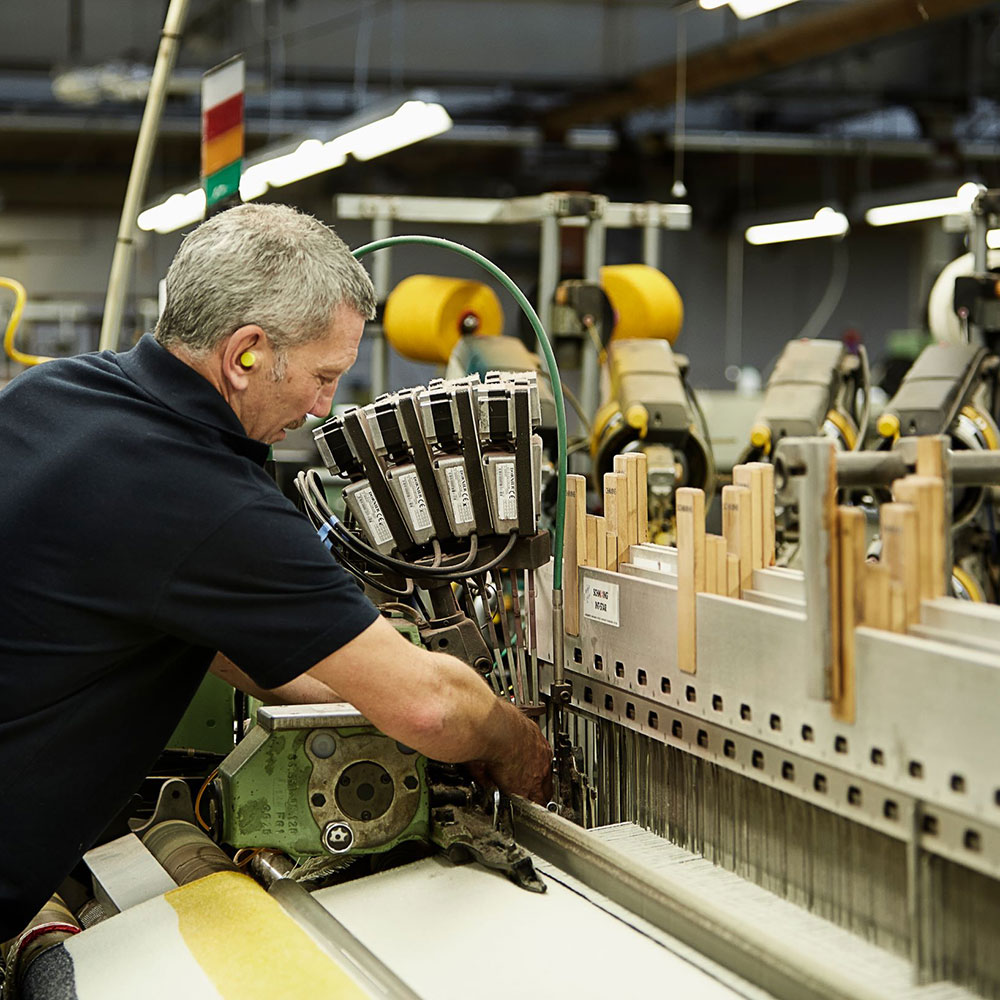
Original research from luxury UK woollen mill AW Hainsworth reveals older generations are leading the way in the slow fashion movement. Younger consumers, meanwhile, are suffering from a lack of accessible alternatives to fast fashion. The survey explored the nation’s attitudes to fashion and suggests that a lack of understanding about the concept of slow fashion could be preventing wider uptake.
Despite perceptions that young people are leading the fight against the climate crisis, Gen Z respondents were most likely to say they purchase fast fashion regularly (24%), with 28% saying that it allows them to wear the latest trends affordably. However, this age group was also most likely to agree that they would like to purchase less fast fashion, but struggle to find alternative options. In fact, 30% of Gen Z respondents said they rarely see ethical, sustainable clothes that they like.
Gen Z are also the most likely to say clothes that are made sustainably are often too expensive for them to consider (31%).
Commenting is Julie Roberts, marketing manager at Hainsworth. “Higher purchasing costs are part of a slow fashion approach and are a good sign that the supply chain is transparent, people are being fairly paid at all levels, and the environment is being cared for. However, this is likely to present an access barrier for younger people who have lower earnings and a lower disposable income.
“Younger people are also likely to be more invested in trends. This means that regardless of income level, they are less likely to see the long-term benefit of investing in a well-made, classic item of clothing designed to last for many years. We need to help consumers understand the ethos and the benefits of slow fashion, leading to a mindset shift and ultimately a behaviour change. We are optimistic for the future; 73% of Gen Z respondents said their clothes shopping is more thoughtful now than it was five years ago. This suggests a growing level of consideration and awareness around purchases.”

At the other end of the scale, those aged 55+ were least likely to purchase fast fashion; only 11% said they do so regularly. They are also most likely to rate many principles of slow fashion as ‘important’ or ‘very important’ to them. This generation, known as Baby Boomers, say it’s important to them a garment is well made (92%). They also prioritise that the people making their garments are treated well and paid fairly (75%). Plus, they are most likely to agree the fashion industry needs to change to protect the future of the planet (46%). This is alongside personal style being more important to them than fashion trends (58%).
The survey also reveals a need for education on the slow fashion movement; 13% of surveyed shoppers were unable to identify the main principles of slow fashion.
Roberts continues; “Our research clearly shows that there is a consumer demand for clothes that will stand the test of time; made within a transparent and responsible supply chain and with minimal impact on the environment. These three elements make up the definition of slow fashion. However, consumers are unfamiliar with the term itself and unsure about where to learn more about it.
“The industry is gradually changing. This year we have seen prominent design houses like Gucci return to two shows a year and the British Fashion Council call for a ‘reset’ of the fashion industry. The recent news that the Prince of Wales is supporting a sustainable fashion line is also very welcome. But, to be effective, slow fashion requires buy in at every element of the supply chain and importantly, from the consumer. At Hainsworth, it’s our mission to champion the movement from the perspective of a textile producer.

“As a mill, we have a responsibility to pay our workers fairly. To source our raw wool responsibly, minimise waste and manufacture cloth that will last. We are committed to playing our part in educating consumers on the steps that need to be taken to create a fairer, cleaner, and we hope, slower fashion industry.”
The results suggest that consumers are eager to have more information at their disposal when it comes to purchasing decisions. Over 4 in 5 (83%) agree the fashion industry needs to be more transparent about how clothes are made. Plus, 22% of respondents said that when they purchase fast fashion, they worry about who made their clothes. This rises to 30% in respondents aged 16-24.
The research undertaken by Hainsworth is part of a wider commitment to the slow fashion movement.
The mill recently partnered with Reshore Apparel to launch Studio H, a partnership which offers the unique service of creating garments from raw fibre to finished piece under one roof. This means a reduction in carbon emissions and provenance is crystal clear with a guarantee of the utmost quality. Designers and retailers can be confident they are investing in British manufacturing with a conscience.
The use of cutting-edge imaging technology allows designers to see how patterns and fabrics will sit against the body on a virtual catwalk. They can also visualise how the finished piece will look, move and perform. This results in fewer samples, which further reduces waste and carbon emissions.
Hainsworth is also working on its first run of recycled wool using the waste products from its existing production line. For further information on AW Hainsworth, please click here.







